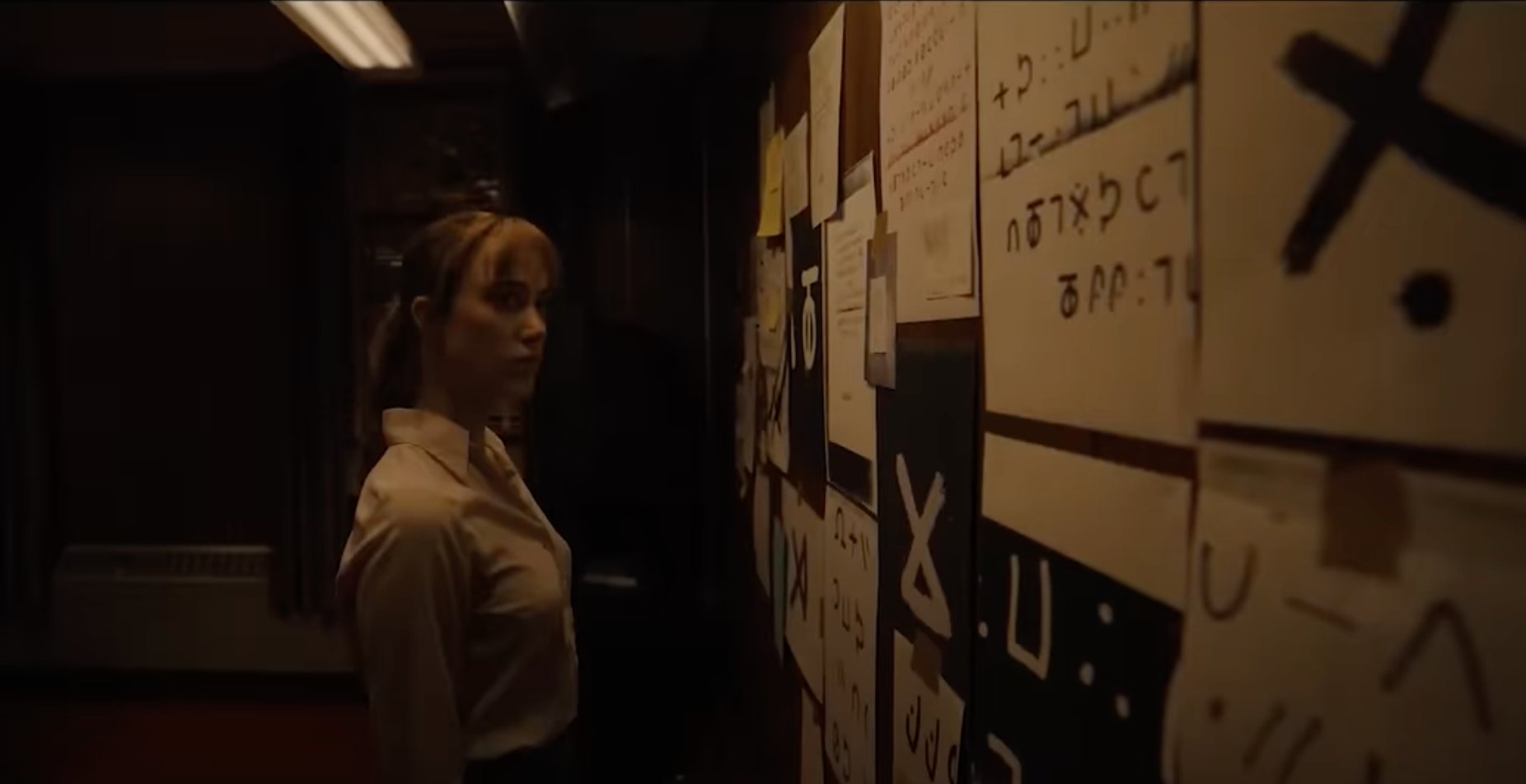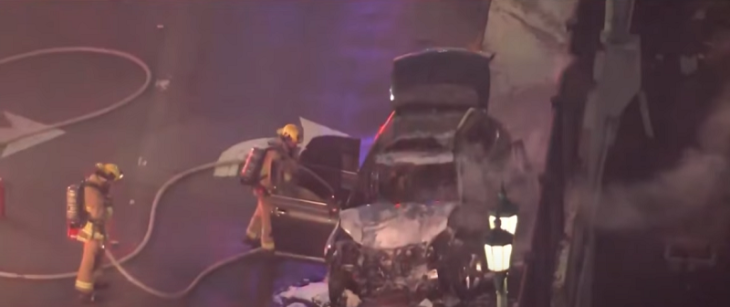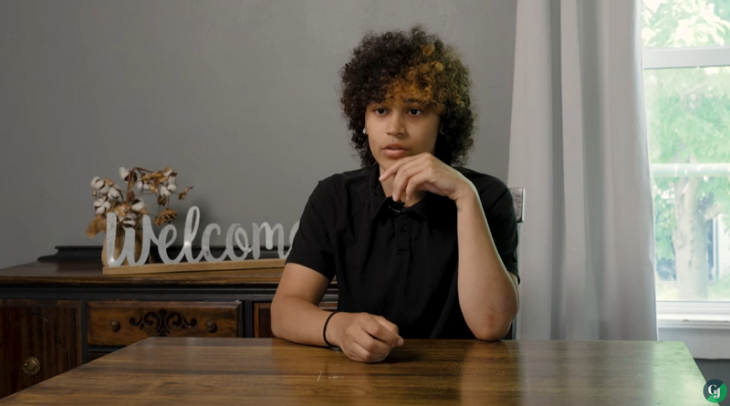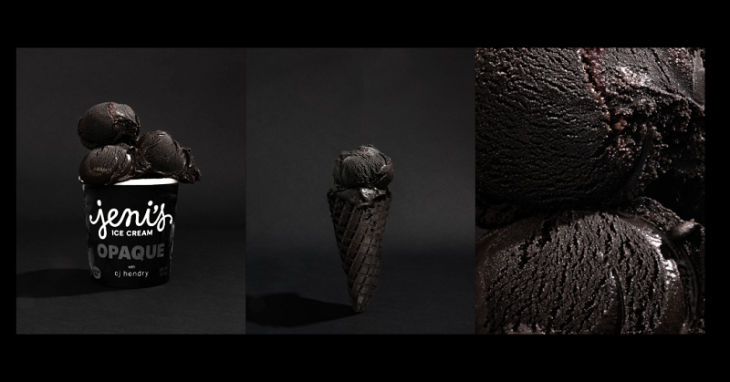By Dolores Quintana
Longlegs is pure poetic eldritch terror. From the very beginning, director Osgood Perkins uses the actors’ performances, cinematography, and even locations to create a sense of foreboding and dread. The filmy plastic sheets of a murderer’s hideaway are both frightening and beautiful, which is a hallmark of the film. Gorgeous, thrilling, and irresistible evil beckons to the audience with a seemingly harmless giggle.
Longlegs, directed by Osgood Perkins, starring Nicolas Cage, Maika Monroe, Alicia Witt, and Blair Underwood, opens on July 12. You can watch the official trailer here.
Maika Monroe’s performance as Lee Harker is stellar. Her entire being seems shot through with a presence of doom and a whirlwind of inner panic. Nicolas Cage’s appearance in one of the film’s first scenes is utterly terrifying, while he does very little.

In his previous films, Osgood Perkins has honed his skills as a director and used his own unique inner alchemy to grasp the audience in his powerful grip and squeeze. The first time I watched the film, I was overwhelmed with a wave of terror; with the second viewing, I was able to see so much more of the film’s intricate and delicate underpinnings. Gazing into the eyes of Nicolas Cage as Longlegs and down the barrel of Osgood Perkins’s wild and fiendish talent made me burst into tears.
Cage’s appearance is an acting feat that few actors are capable of, and he’s almost unrecognizable as the enigmatic and unholy Longlegs. The brief scenes in which the character appears have a dreamlike or psychedelic effect that preys upon the mind of the viewer, increasing the already almost unbearable levels of intensity. Still, there is a childlike aura to this disquieting being, which is all the more dreadful. Nicolas Cage has once again raised the bar for all actors.
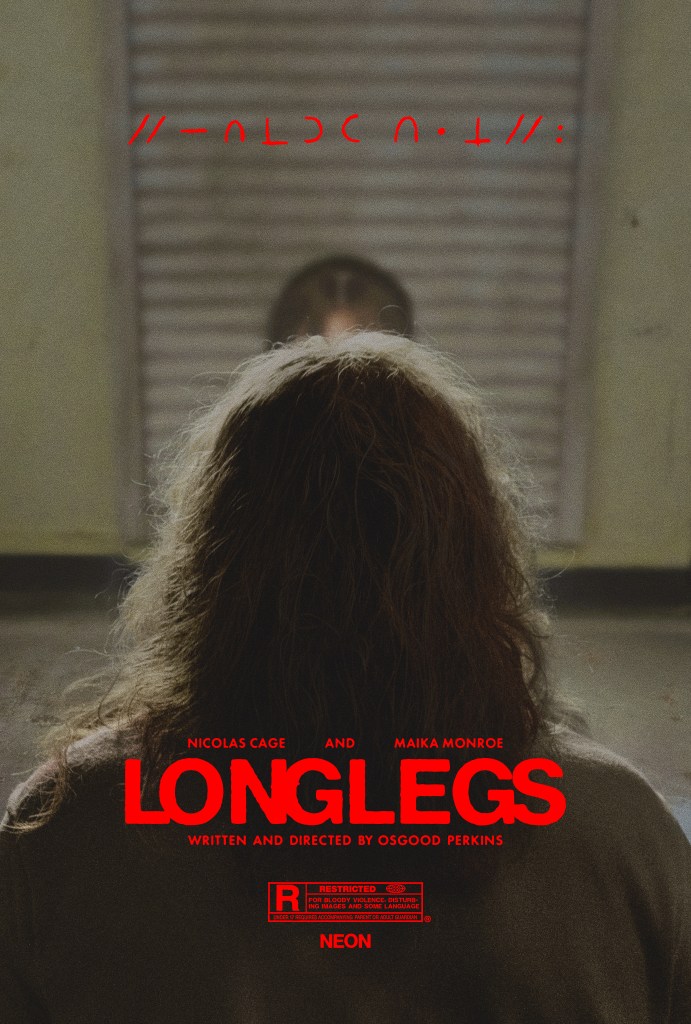
My hands instinctively rose in defense as he appeared, and the way the shot was presented intensified the surreal feeling of horror. The director’s sure hand with the rich characterizations of Maika Monroe and the other major characters enlarges the film’s scope. Lee Harker, a character similar to Clarice Starling and Will Graham, is haunted by something she doesn’t understand about herself, adding to the sense of unavoidable fate in the film.
In the scene where Harker is on a neighborhood canvas with a partner, the audience can follow along with her thought patterns as she connects the dots, knows where the danger is, and tries to warn others. This is the trope of the FBI investigator with an uncanny ability to connect with the killer, amplified to an uncanny level never previously seen in such films as The Silence of the Lambs and Manhunter.
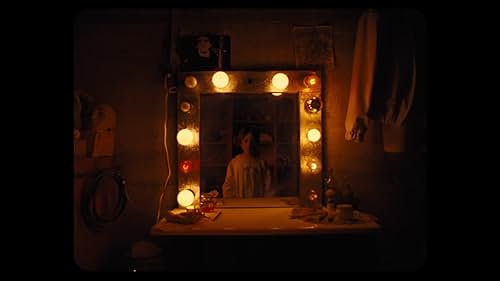
The film follows the inner life and thoughts of Harker so closely that it sometimes feels like the audience member is inside her head, particularly when she is in danger. It takes the idea of the investigator who has a connection with a killer and makes it more palpable and less of an intellectual exercise. It’s great character work because it involves the audience so much more. It’s one thing to hear that someone has a connection to the killer, but it’s another to actually feel it emotionally. It’s very real, very involving, and so much more frightening.
The film really conveys the loneliness of the main characters, Harker and Longlegs. Alicia Witt’s performance is deeply unsettling, even when she is just on the phone. It feels like she is not really there, as if she were a whistling void rather than a person. Her performance expresses the central idea of Longlegs incredibly well. Blair Underwood and his family offer a warm contrast to the chilly world that envelops Harker—a lifeline to the world where the rest of us live.
The film’s quietude sets it apart from the genre’s typical jump scares and use of music cues. While the film’s sound design is incredibly well done, the silence in between everything is one of the most chilling things about the tale. It’s like being in the mind of a madman hurtling through space with only yourself and insanity as your companions. It is the inner life of the film’s characters blooming inside your own head.
When violence erupts, usually with the jarring blast of a gun, its impact is heightened. The film creates a sense of a world that is empty and cold in a way that feels utterly hopeless. From the production design to the cinematography and use of music, there is a pervasive feeling that we all inhabit Longlegs’ world, but only so as long as he allows it.
Longlegs is a mesmerizing serial killer tale that swallows the viewer whole. The feeling of being inside the head of a serial killer or an intense FBI agent has never been so enrapturing and seductive. It shows rather than tells all of the plot devices and character arcs that other films have used and makes you feel it in your bones. It is the work of nefarious sorcerers of cinema who worship at the altar of a mad god.

